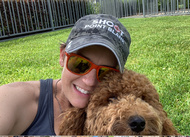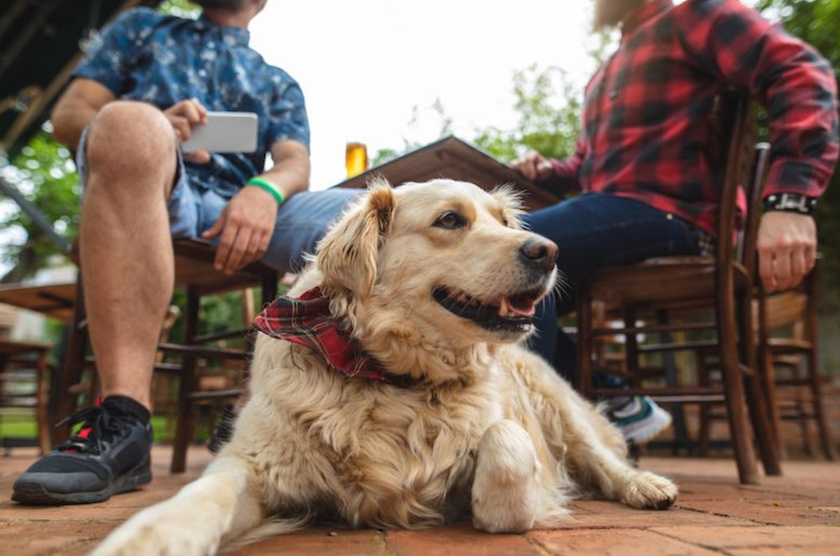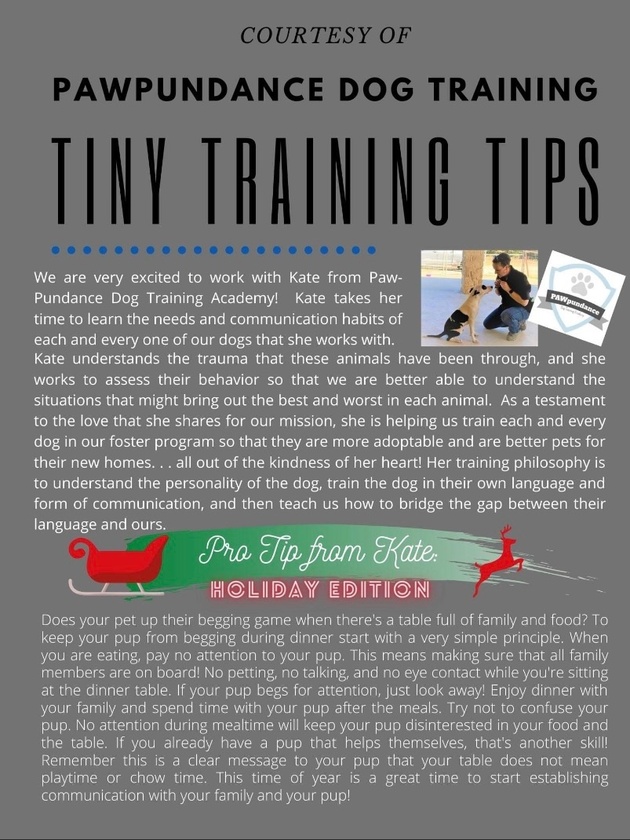
It’s ok! We’re here to help. We speak a little dog and can help translate for both of you. It’s probably just a miscommunication! And we are here to help get you both speaking the same language! Woof!
Connect with the PAWpundance training team and other members of the dog community to discuss better ways to communicate with your furry house guest.
**To get started USE code: TRIAL1month **
Is there anything more adorable than a frenchie playing fetch... in slowmo and yes - He maddogs the camera in the end. What a little character!!
“Ahh! I can’t get my dog to play fetch!” Right? It is not as easy as people make it look. I read this in a book once and thought... omg so true - and I have to share it with you.
Imagine you are in the park. You see a guy with a gorgeous golden retriever. He throws the frisbee and the golden dog jumps in up to catch it midair. Then the sweet dog dutifully returns the frisbee and drops it at the mans feet. The pup then sits and waits for the next throw. You sit and watch the way this dog with his shiny gold hair leaps and twists in the air almost showing off his agility. The pair make the activity look simple. No leash. No frustration. When they are ready to go, the pup comes to the man with the last frisbee. And they leave. You happen to have your pup with you. You can not trust this little devil off leash in a crowded park. When Snickers gets the ball, she runs away with his and tries to hide it. It must be the dog... your dog must not be a fetch kind of dog right? That was clearly a retriever... nope.
When you see a calm relaxed relationship like that... it is the product of a lot of attention. What most likely happened is that man has been doing a version of fetch with that dog every day since that pup began living with him. When you see a good relationship, it’s not magic or coincidence. It’s the product of a lot of attention and practicing solid communication skills. So let’s begin!!
I like to teach fetch in a style that the pros call “backchaining”... what does that mean?? We teach it backwards. I just have to throw in the fancy words on occasion. But I read a lot of the dog training subject and dog trainers try to write too technical... Let’s keep it simple!!
So we start with the drop. Just hand the toy to your pup. I began by giving the toy to Bailey. I would squeak it and wiggle it to make it interesting then just give it to him. Once he got to squeak it and play with it, i call him (recall practice) and I say “drop”. I don’t start a tug of war. If I get super interested in the toy, it will be a game and he will fight me for it. So I totally ignore the toy. I pet him and love him and shower him with attention. When he relaxes his jaw and releases the toy, because he’s forgotten about it... due to the snugglefest... I click and reward. “Hmmmm treats???” This is on your pups mind. Begin again. Squeak and play and make that toy very very interesting. Then put it in his mouth. Let him squeak it. Call him. Say drop. Pet him. Tell him what a good boy he was for coming to you. Totally ignore the toy. He relaxes his jaw. Click and reward. By the third or fourth time, most dogs are thinking about the treat and its more of a trade: I drop the toy so I can put the treat in my mouth.
So once you are a little better at the drop and it’s coming along you can refine it a little with each session. Don’t expect to push too much in each session. After you hit a milestone, consider using the “jackpot” tool. Have a higher value treat and when a milestone is reached - your excitement should be like you won a bunch of money on a scratch off (maybe not a million bucks... but pretty darn excited). It might not be your personality. Who cares. Really, who cares. This is about using your body language and attention to guide a different species to understand our human world. It’s a pretty big undertaking... fake some excitement so your little “alien” can understand what the heck is going on in this foreign world. You can be you with your friends, when you train, you are a cheerleader and a coach! Now, muster up some jack pot excitement and help your fur baby understand how important it was that she mastered this new skill today!! Drop it can be a life saving cue in itself. If your dog picks up something that can be harmful, a solid “drop it” can save her life. So let’s show our pup how important each milestone is!! Jackpot! Yes! High value treat! And then ...END THE SESSION.
Pick up the session the next day on a win. In the gap of time between that amazing burst of positive energy and delicious treat, all your dog can think about is... “how do I make that happen again?” Always end on a win. If you think your dog isn’t thinking or is too dumb...consider - someone is always being trained. And dogs are great at adapting. He has a crazy barking fit, you let him outside - win. You are trained, my friend. His cue for you is barking fit and you open the door. You become more and more immune to his barking, he ups the value of his barking and becomes louder and more aggressive, he starts to chew... and then you respond and open the door and let him out... you are trained. He’s good.
If we end on a jackpot, he’s pondering, what do I have to do. So you begin a new session. You hand him the toy. He won’t even go and squeak it. He immediately relaxes his jaw. And drops the toy. He’s throwing the drop before we can even establish a cue... boom! However most of us miss it. We keep shoving the toy back in his face - why won’t you take the toy so we can begin. Oh boy! How confusing. Poor pup!
If we caught on, and saw that he was throwing the drop, then we can move on. We can then go to hand him the toy but give a little toss. Thus we begin our retrieval. Start by just tossing it straight up in the air and then progressively toss further and further away. It’s a huge mistake to throw it too far and then begin the habit of fetching it yourself. If you are doing this, you need to just work on keeping it close by. Toss it straight up in the air. If your pup is not interested in it, rub bacon grease or some other acceptable/lovely smell on it so that your pup really wants to find that toy!! Dogs love smells!! Make it smell nice.
Then you can make the drop part progressively better. One rule i have is I never touch the toy while it’s in their mouth. I have my pups drop and then sit and wait for me to pick up the toy. They remain in a sit until I throw the toy. If you really want to work on impulse control (which is a major life skill for a dog) try asking your pup to wait to fetch the toy until you release him. Wow! That’s a major skill!! Very tough. If your pup masters that, it will be the result of lots of time and attention on both your part and you will have a really solid relationship with your pup.
Way to go Bailey for learning this skill at 12 weeks old!!
Welcome to PAWpundance Dog Training Academy on Locals.com!
We’re thrilled that you’ve joined our community! PAWpundance is a place for positive, dog-loving people to come together, share experiences, and help each other grow. Locals offers an “ad-free experience,” so even a small contribution helps support our tech and keeps our community thriving.
We want to see your furbabies!
We’re here to assist with any questions you may have about training, behavior, and more. At PAWpundance, we believe in blending knowledge with a bit of fun—expect plenty of paws, puns, and maybe even a dance or two! Together, let’s enjoy some laughs and build stronger relationships with our pups.
Our Philosophy:
We’ve invited another species to live in our homes, and our dogs are much more than accessories; they’re our guests. They don’t speak our language, and like in the movie E.T., we don’t want to be the intimidating figures trying to coerce a scared, confused being. Instead, we want to be like ...
Eye Contact, Eye Contact, Eye Contact!
Reward every glance. Start by reinforcing brief glances, then encourage your pup to hold your gaze a bit longer. Gradually phase out your part of the eye contact—your pup will learn to watch you and adapt to your movements naturally. This approach helps them learn to walk with you without relying on leash cues.
Remember, the leash is purely for safety—not for communication.
Take a look at this video with Meghan and Buckee. Buckee is watching Meghan closely, and she rewards him by making eye contact, smiling, and offering treats. Meghan also looks forward occasionally, teaching Buckee to walk with her in sync.
Notice that Buckee is a reactive pup, so the leash is essential for safety, especially if he responds to something unexpectedly. However, it’s only used for physical control when necessary. When Buckee refocuses, Meghan reestablishes instructional control, and they continue their walk together. She does a fantastic job of engaging with him! In ...
Loose-Leash Walking Tip:
Where you reward makes a big difference! Try using the hand on the same side as your dog when giving treats or praise.
When you reach across your body to reward with the opposite hand, it draws your dog’s nose in front of you, encouraging them to move ahead and potentially start pulling.
In the video of Meghan and Domino, Meghan holds the leash with her left hand while Domino walks on her right. She rewards him by petting and giving treats with her right hand. This keeps Domino walking by her side on a loose leash, rather than in front, pulling her along.
Next time you’re out walking with your pup, try rewarding with the hand on the same side as your dog.
https://twitter.com/wholedogjournal/status/1295508215740932098?s=21
How to teach you pup to be a good dining companion! What a great skill!

https://twitter.com/wholedogjournal/status/1292609106637987840?s=21
This is about counter-surfers, but I love the description of trying to shame dogs. This author, Pat Miller helped me understand this concept in her book the Power of Positive Dog Training.
If you’re still on Twitter, the Whole Dog Journal is a great group to follow. Lots of fantastic info!













